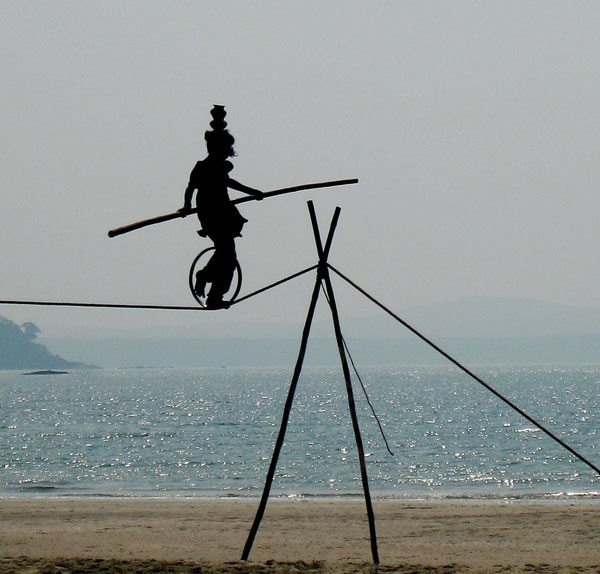
Editors’ Note: This article is reprinted with permission from Kate Barr and the Nonprofit Assistance Fund.
The recent news of Minnesota’s Crisis Connection closing due to shortfalls in funding is a powerful case study in the financial and strategic issues that face nonprofits.
And it raises a gigantic, thorny question: What is the balance between serving the common good and the financial realities of nonprofits?
Crisis Connection is a hotline for people in the midst of mental health emergencies, including suicidal feelings, and it has existed for nearly half a century. Since 2011 it’s been operated by Canvas Health, a nonprofit dedicated to psychological and chemical health and counseling. When Canvas picked up the baton on Crisis Connection, they made investments and upgrades to the service—which is clearly in the wheelhouse of what they do.
But it hasn’t worked out on the financial level. Canvas had worked hard to pull in subsidies from the State and from other health organizations to support the hotline, but as of this year they’ve racked up nearly $1 million in losses. Something had to give.
No one disputes the need for Crisis Connection. About 20,000 people called the hotline last year, and the most recent statistics on suicides in Minnesota tragically reveal a rate on the rise. But the hotline is only part of a wide range of services Canvas Health offers—and an expensive one.
Ultimately, Canvas had to make the decision that they could no longer afford it. Without outside funds, Canvas was essentially subsidizing Crisis Connection on its own. Of course this is the very nature of nonprofit endeavors—if there wasn’t a need for subsidies, it wouldn’t be a nonprofit.
But this is an interesting area of tension, and every nonprofit at some point has to make difficult decisions about what to subsidize and what to let go. There are always limited dollars to spread around to pay for things. Where do you spread it, and how far do you go?
The question is made even more difficult by the question of mission and the common good. Crisis Connection is an absolute common good, there’s no doubt about it. A well-staffed, well-publicized crisis hotline is a good thing. But that doesn’t answer the question of who pays for it.
Sign up for our free newsletters
Subscribe to NPQ's newsletters to have our top stories delivered directly to your inbox.
By signing up, you agree to our privacy policy and terms of use, and to receive messages from NPQ and our partners.
There’s been justifiable alarm about the impending loss of Crisis Connection, accompanied by calls for support from the funders and the community. This is a very public example of a constant, narrow tightrope: where nonprofit finance and mission to serve intersect. Where does Canvas’ obligation to this way of serving the common good end and someone else’s begin?
For Canvas, annual losses from Crisis Connection have been reducing funds available for all their other work. If you have six things you want to do, and you want to do them all well, and they all require subsidies, you might not be able to make it happen. You might not be able to get enough focus and traction to fulfill your mission.
Nonprofit leaders have to make decisions for their organizations that, to the outside, might look selfish—cutting programs that serve real needs. It’s the hardest part of the decision-making process, but one of the most important. It involves truly understanding what it costs to do the work, and choosing among programs with the understanding that you can’t do everything.
Do you run a telephone line or keep the lights on at the clinic? Okay, you brought in $100,000 at your gala, but what can’t you do with that money?
And at what point is it too expensive for you to serve one aspect of the commons? And who pays for the commons? These are the huge, global issues that make up the terrain where nonprofits live all the time.
From NAF’s perspective, one of the most difficult but necessary things we can do is help to make those incredibly hard, sometimes heartbreaking decisions. But there comes a time when a nonprofit can no longer kick these choices down the road. Hard decisions have to be made.
Canvas Health deserves huge credit for being realistic and concluding that they simply couldn’t absorb the losses from Crisis Connection any more. They knew they would be second-guessed by outsiders, and it was surely agonizing for them. But knowing how hard the choice had to be means we have to respect it.
We’re all relieved that the Minnesota Department of Health has stepped in with enough funding to maintain the service to spring 2018 and buy time to continue to seek ongoing subsidy for the critical service. Canvas Health will continue to serve the community with vision and commitment, one of many nonprofits doing the work of serving the common good. And every single one of them will grapple with the question: where does their obligation end? And, ultimately, who picks up the check for the collective needs of the people.













